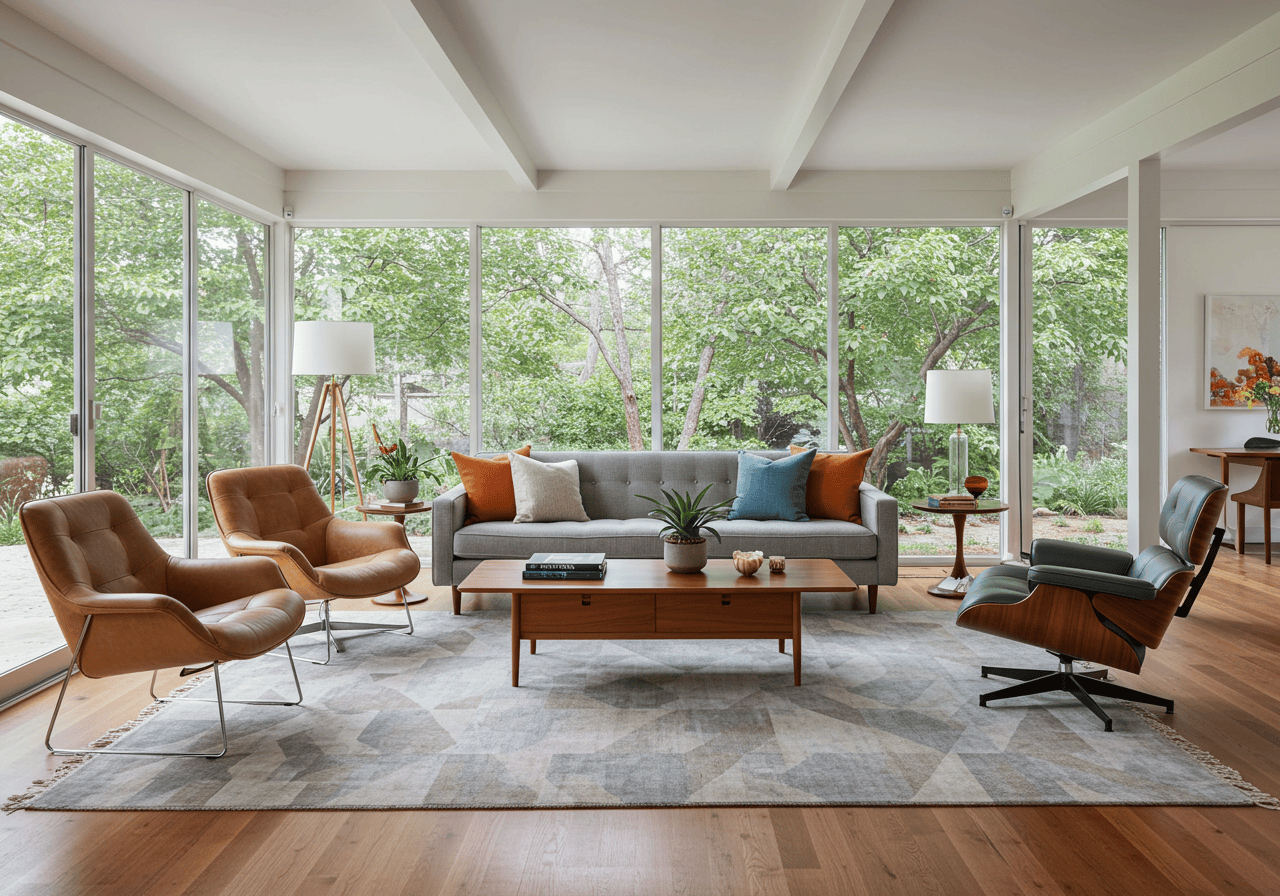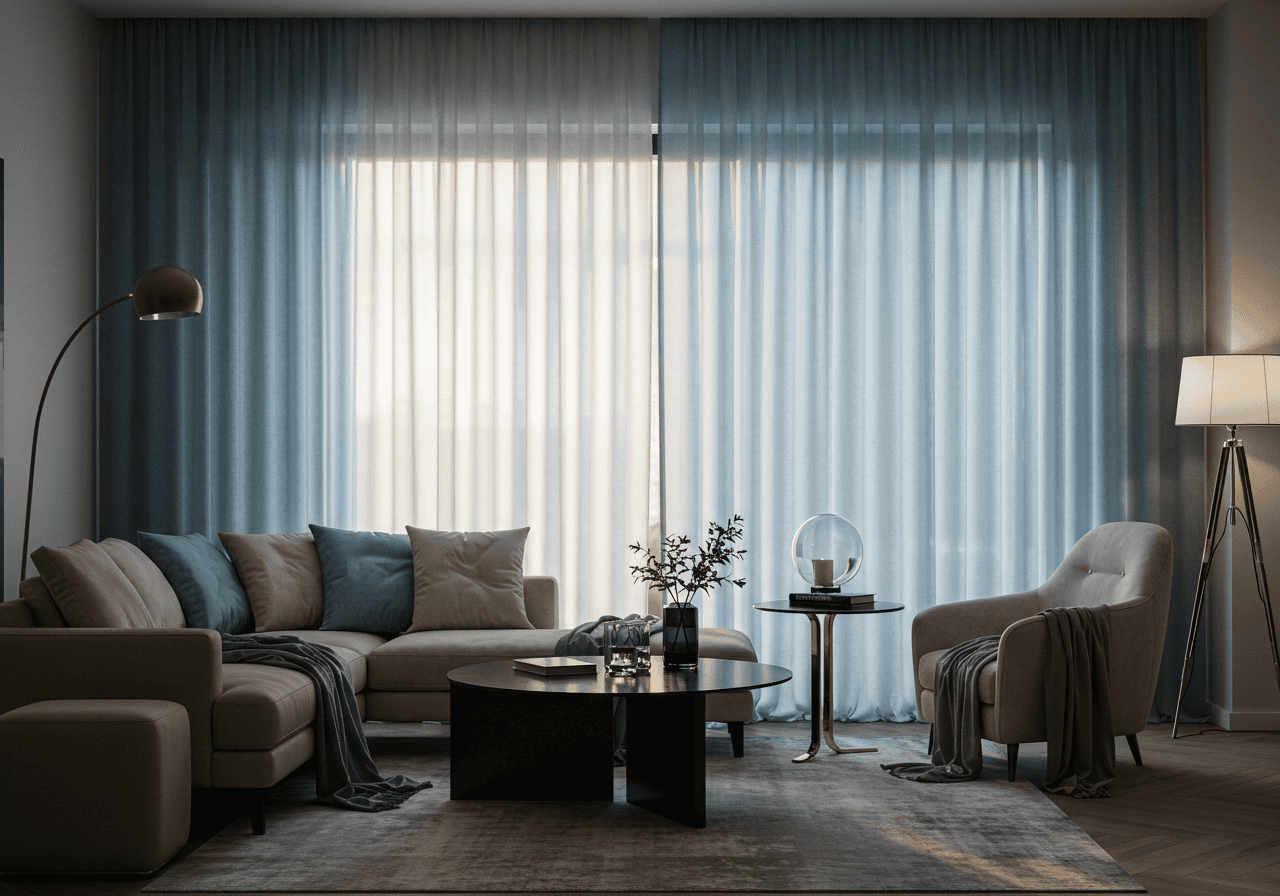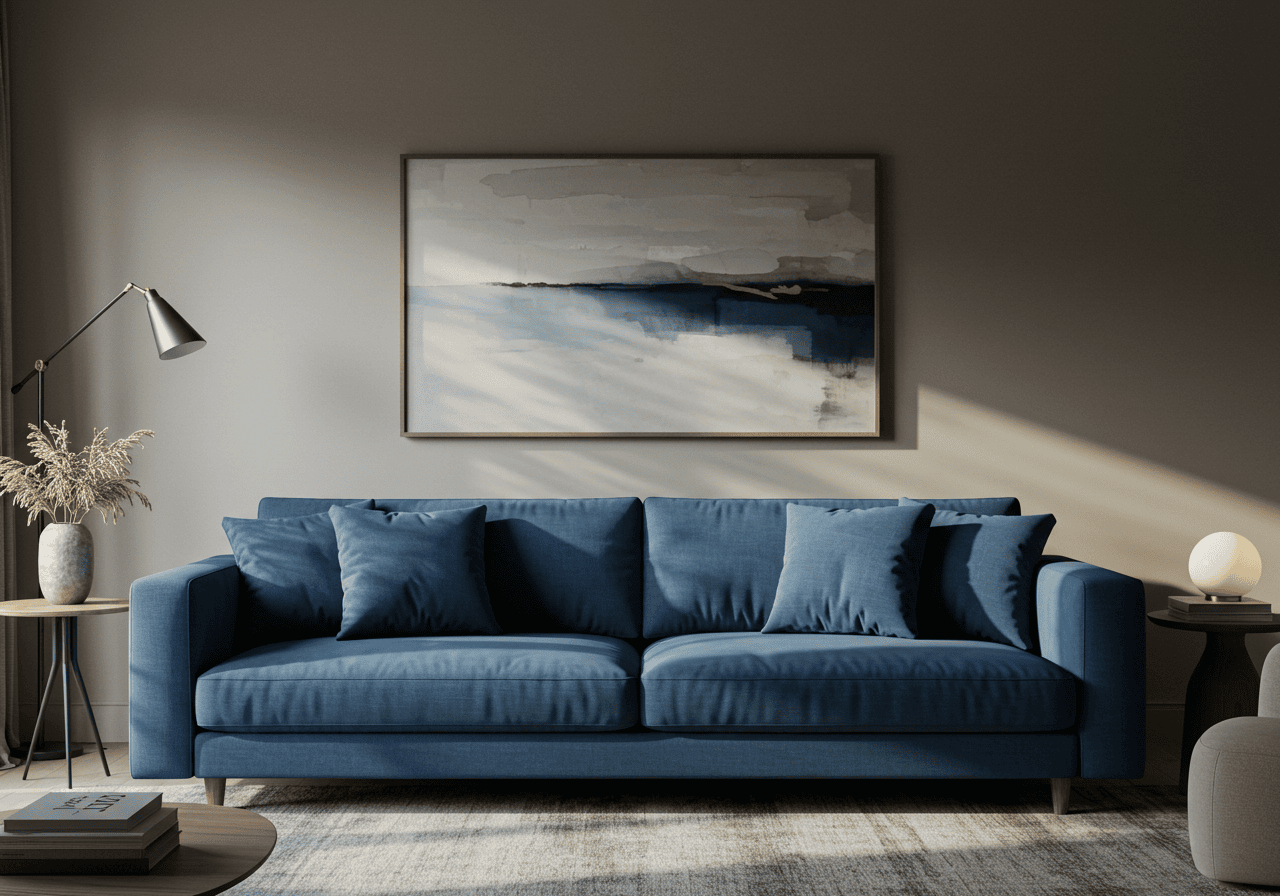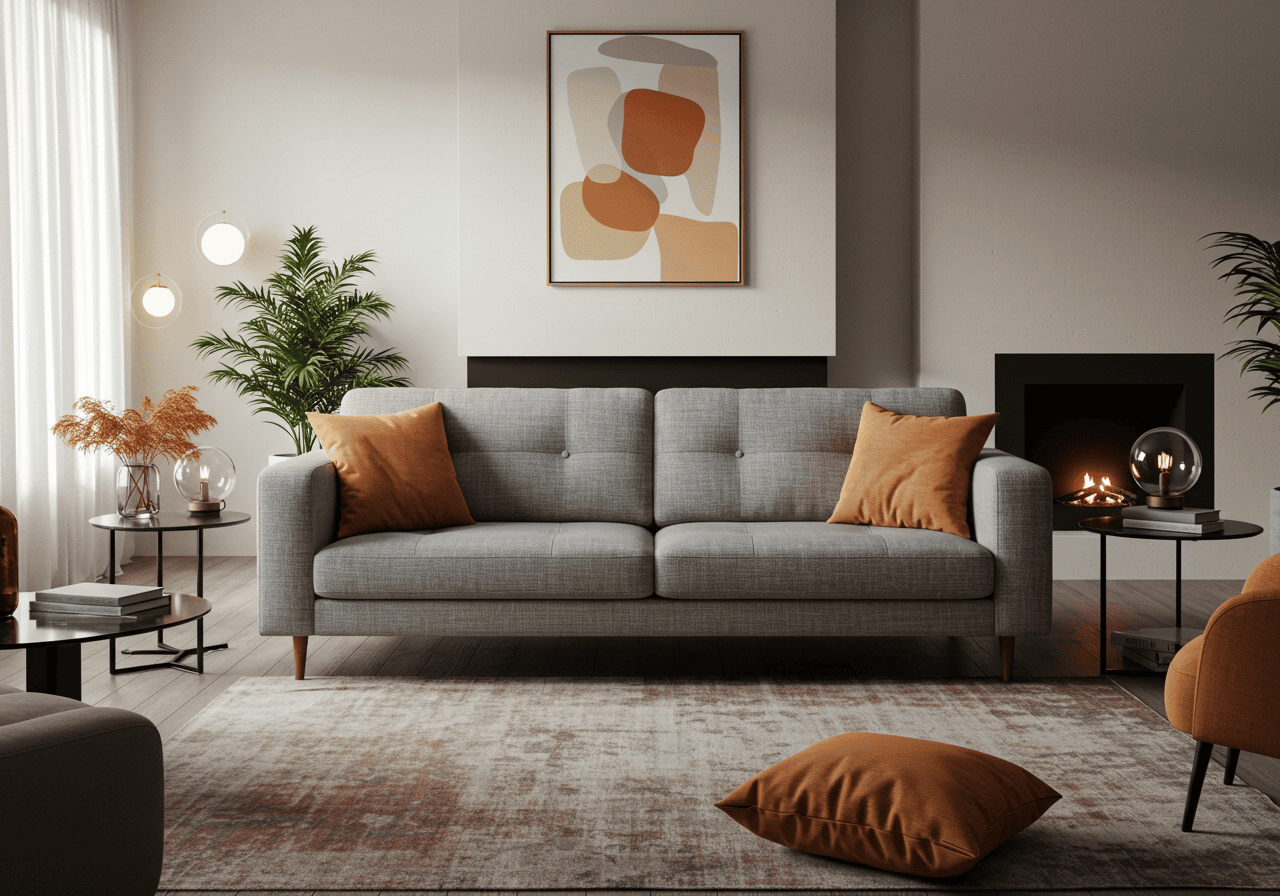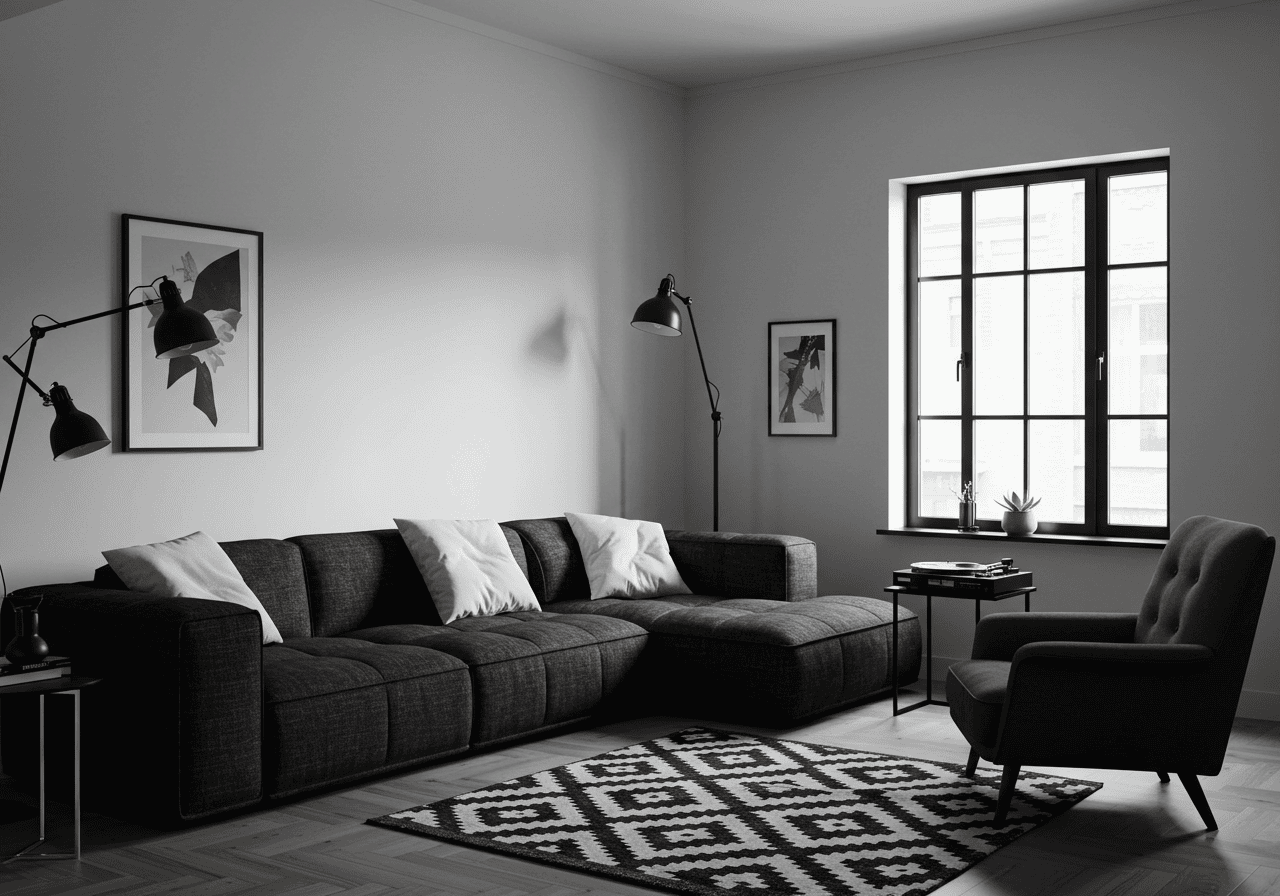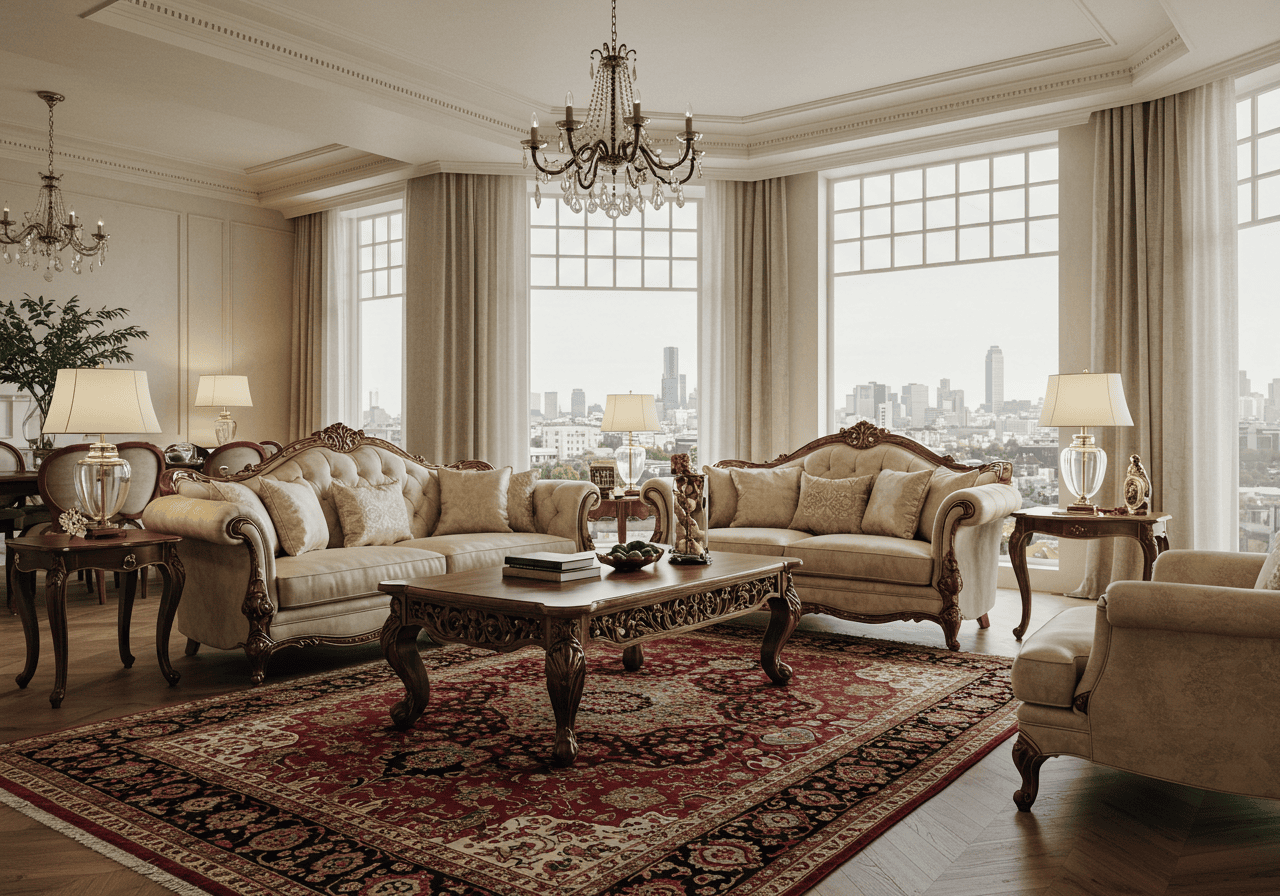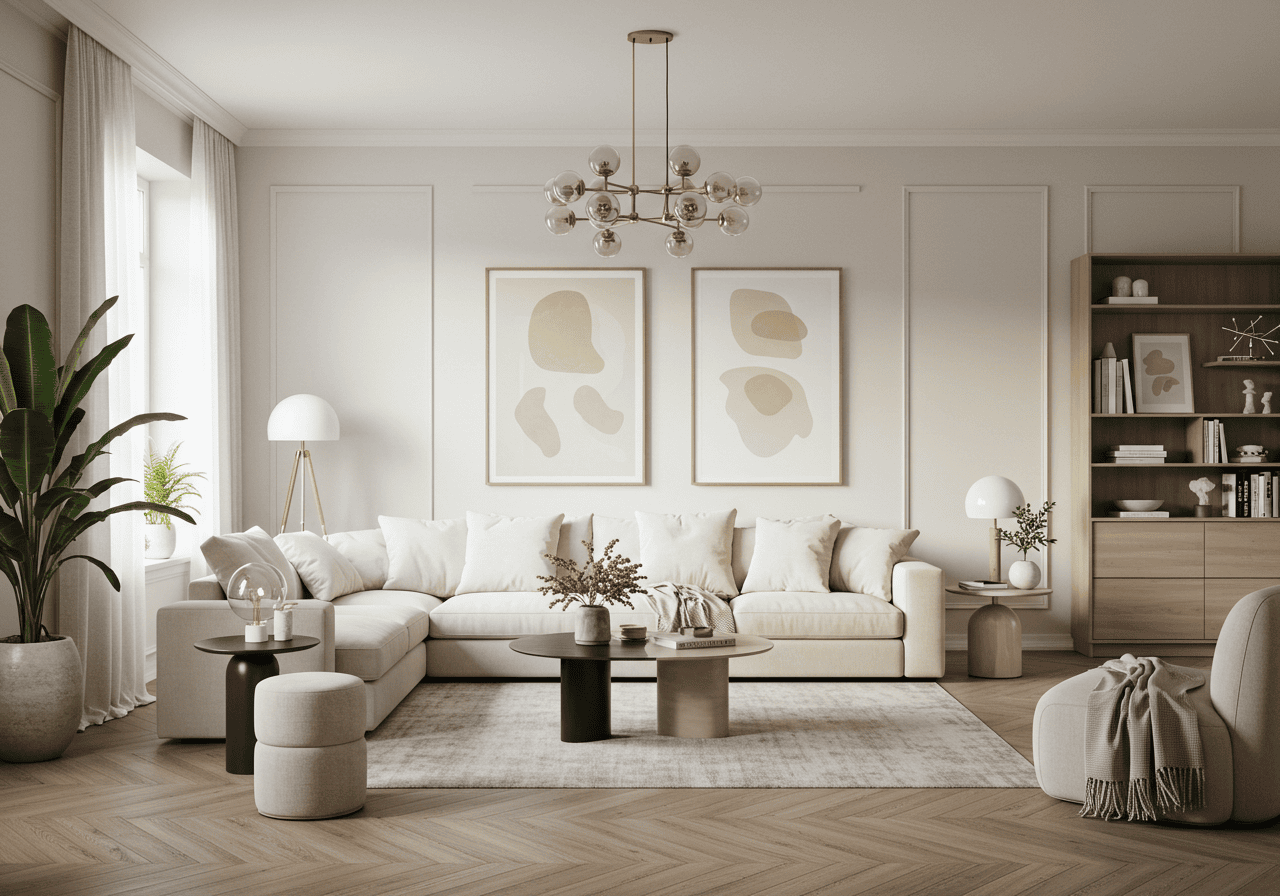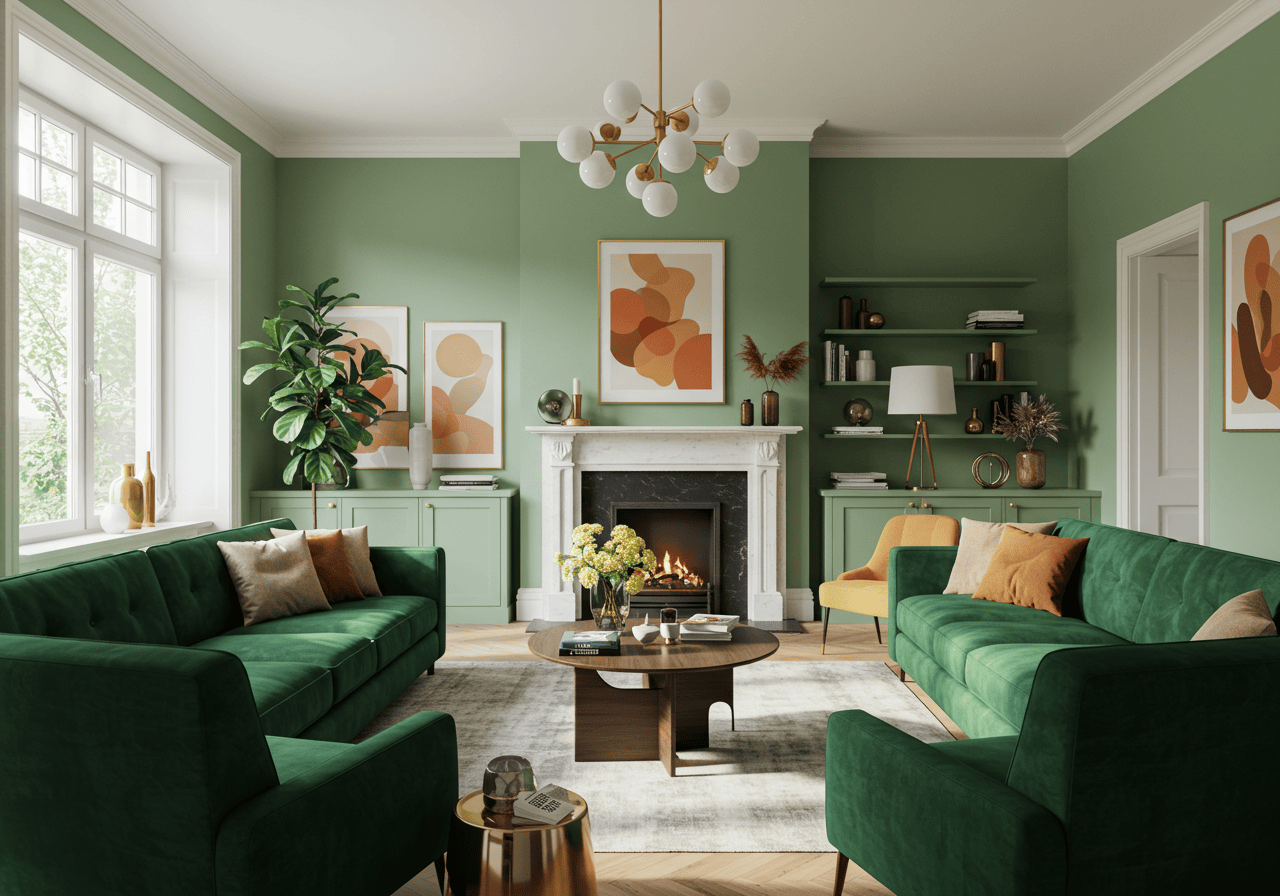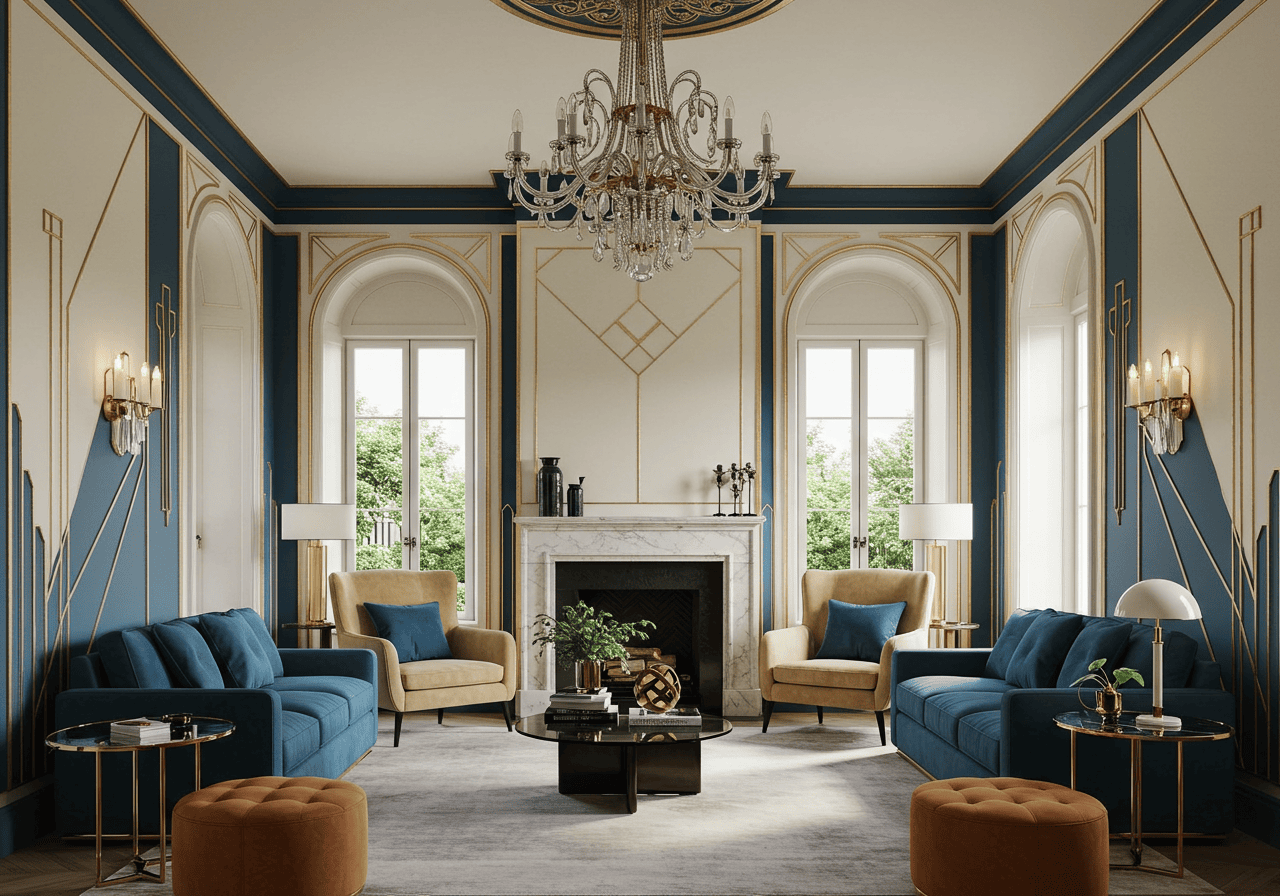Hey there, fellow homebodies and design dreamers! Ever scrolled through Pinterest and found yourself utterly captivated by those bright, airy, and effortlessly chic living rooms? Chances are, you’ve fallen for the timeless charm of Scandinavian design. It’s more than just a trend; it’s a philosophy rooted in simplicity, functionality, and a deep connection with nature, creating spaces that feel both stylish and incredibly inviting.
If you’re dreaming of transforming your living room into a serene Scandi sanctuary, you’re in the right place! We’ve curated 21 inspiring ideas, packed with expert tips and unique insights, to help you nail that coveted Nordic look. Get ready to embrace clean lines, cozy textures, and a whole lot of hygge!
1. Embrace the Light Fantastic: The Foundation of Scandi
In Scandinavia, where winters can be long and dark, maximizing natural light isn’t just a design choice—it’s a way of life. This principle is the cornerstone of any authentic Scandinavian living room.
- Why it works: Abundant light instantly makes a space feel larger, airier, and more uplifting. It beautifully highlights the clean lines and natural textures characteristic of Scandi style.
- Get the look:
- Go big on windows: If you’re renovating, consider enlarging existing windows or adding new ones.
- Sheer brilliance: Opt for light, airy window treatments. Think sheer linen or cotton curtains that diffuse light beautifully rather than blocking it. For more inspiration on window dressings that complement this style, check out these curtains ideas for your living room.
- Light-reflecting colors: Paint your walls in shades of white, soft grey, or pale pastels. These hues act as a canvas, bouncing light around the room.
- Strategic mirrors: A well-placed mirror can work wonders in reflecting light and creating an illusion of spaciousness.

2. Wooden Wonders: The Heart of Scandi Warmth
Wood is absolutely fundamental to Scandinavian interior design. It brings warmth, texture, and a vital connection to the natural world, balancing the often-cool color palettes.
- Why it works: Light-colored woods like pine, ash, beech, and pale oak are staples, contributing to the airy feel while adding organic beauty. The grain and imperfections in wood tell a story and add character.
- Get the look:
- Flooring first: Light wood flooring is iconic. Think wide planks in a natural or whitewashed finish.
- Furniture focus: Incorporate wooden elements through your coffee table, side tables, shelving units, or even the legs of your sofa and chairs. Look for pieces with clean lines and minimal ornamentation.
- Don’t forget details: Wooden picture frames, decorative bowls, or even neatly stacked firewood can add subtle woody accents.
- Mix it up (gently): While light woods dominate, don’t be afraid to introduce slightly varied tones for depth, but keep the overall feel bright. This approach shares some sensibilities with styles that appreciate natural materials, like some aspects found in a rustic modern living room but with a distinctly lighter, more minimalist Scandi execution.

3. Master the Art of Minimalism (with a Cozy Twist!)
At its core, Scandinavian design champions minimalism – but it’s a warm, inviting minimalism, not stark or cold. It’s about decluttering your space and curating items that are both beautiful and purposeful. Lagom, the Swedish concept of “just the right amount,” is key here.
- Why it works: A clutter-free environment promotes tranquility and allows each carefully chosen piece to shine. This “less is more” approach is particularly effective in smaller spaces.
- Get the look:
- Declutter ruthlessly: Before you even think about new decor, take time to declutter. Keep only what you love or truly need.
- Intentional decor: Choose decorative items with care. Think a single beautiful ceramic vase, a stack of art books, or a striking piece of abstract art.
- Smart storage: Invest in stylish storage solutions – think sleek sideboards, floating shelves, or woven baskets – to keep everyday essentials hidden but accessible. This is a fantastic strategy if you’re working with living room designs for small spaces.
- Function meets form: Every piece of furniture should serve a purpose, ideally more than one, without sacrificing aesthetic appeal.

4. Neutral Palette Perfection: Serenity in Shades
The Scandinavian color palette is famously serene, dominated by whites, soft greys, muted beiges, and occasionally, pale blues or greens. This isn’t about being boring; it’s about creating a calm, cohesive backdrop that lets other elements, like texture and natural light, truly sing.
- Why it works: Neutral colors are inherently calming and sophisticated. They make spaces feel more open and airy, enhance natural light, and provide a versatile canvas that can easily be updated with accent colors or seasonal touches.
- Get the look:
- Wonderful Whites: Don’t underestimate the power of white! From crisp, cool whites to warmer, creamier off-whites, these shades are a Scandi staple for walls and large furniture pieces.
- Gorgeous Greys: Layer different shades of grey for depth and sophistication. A soft grey sofa, for example, is a timeless choice. For more inspiration on styling this versatile piece, see these grey sofa living room ideas.
- Earthy Accents: Introduce subtle warmth with muted earthy tones, pale woods, or even a touch of soft blush or sage green through accessories.
- Bold in Black (Sparingly!): While the overall palette is light, don’t shy away from using black as an accent. Think black picture frames, a slim black floor lamp, or the legs of a chair. This creates a sophisticated contrast, and for those who love a more graphic look, exploring a black and white living room scheme with Scandi principles can be stunning.

5. Texture, Texture, Texture! The Secret to Scandi Coziness
If neutral colors and clean lines are the bones of Scandinavian design, then cozy textures are its heart and soul. This is where the hygge truly comes alive, transforming minimalist spaces into warm, inviting havens you’ll never want to leave.
- Why it works: Texture adds depth, visual interest, and a crucial tactile element to a room. In a predominantly neutral space, varying textures prevent it from feeling flat or cold, inviting you to touch and experience the comfort.
- Get the look:
- Lovely Layers: Drape sofas and armchairs with chunky knit throws, soft wool blankets, or faux fur pelts.
- Cushion Comfort: Mix and match cushions in different materials – think linen, cotton, velvet (used sparingly for a touch of modern luxe), and knits.
- Underfoot Warmth: A plush wool rug, a natural fiber jute or sisal rug, or even a soft sheepskin can instantly cozy up wooden floors.
- Natural Weaves: Incorporate woven elements like rattan or wicker baskets for storage or as plant pot holders.
- Beyond Textiles: Even the grain of wood, the smooth surface of ceramic, or the slight imperfections in handmade items contribute to the textural story of your room.

6. Functional Furniture with Clean Lines
Scandinavian furniture is renowned for its simplicity, functionality, and beautiful craftsmanship. Pieces are designed to be timeless, practical, and aesthetically pleasing without unnecessary ornamentation. Think “form follows function,” but make it beautiful.
- Why it works: Clean-lined furniture contributes to the uncluttered, airy feel of Scandi design. The emphasis on functionality means pieces are often versatile and space-saving, perfect for modern living. The quality craftsmanship ensures longevity.
- Get the look:
- Sleek Sofas: Opt for sofas and armchairs with simple silhouettes, tapered legs (often wooden), and unfussy upholstery in neutral tones.
- Multi-Purpose Pieces: Look for coffee tables with hidden storage, nesting tables that can be easily moved, or modular shelving that can adapt to your needs.
- Iconic Designs: Consider investing in a replica or an original piece from iconic Scandinavian designers like Hans Wegner, Arne Jacobsen, or Alvar Aalto if your budget allows. Their designs epitomize this style.
- Embrace Natural Materials: As mentioned with wood, look for furniture that highlights its natural material, be it light oak, ash, or even responsibly sourced teak for a touch of mid-century modern living room influence, which often overlaps with Scandi style.

7. Green Companions: Bring the Outdoors In with Plants
A deep love for nature is woven into the fabric of Scandinavian life, and this translates beautifully into their homes through the generous use of indoor plants. More than just decoration, greenery breathes life, purity, and a touch of organic vibrancy into minimalist spaces.
- Why it works: Plants add a natural pop of color and texture against neutral backdrops. They purify the air, boost mood, and create a tangible connection to the outdoors, which is especially cherished during those long Nordic winters.
- Get the look:
- Variety is key: Mix different types of plants – trailing plants like Pothos or String of Pearls, sculptural ones like a Fiddle Leaf Fig or Snake Plant, and smaller succulents or ferns.
- Simple Planters: Choose pots in natural materials like terracotta, ceramic (in white, grey, or muted tones), or woven baskets. Keep the designs simple and understated.
- Strategic Placement: Group plants of varying heights to create a mini indoor garden on a windowsill, shelf, or plant stand. A single, larger statement plant can also be very effective.
- Consider Light: Ensure you choose plants that will thrive in the light conditions of your living room.
- Less is More (Sometimes): While greenery is encouraged, avoid turning your living room into an overgrown jungle. Curated, well-cared-for plants are the Scandi way.

8. Illuminate with Style: Statement Lighting as Functional Art
In Scandinavian design, lighting isn’t just about visibility; it’s an integral part of the decor, often acting as a sculptural focal point. Statement lighting fixtures combine functionality with artistic flair, adding personality and a touch of modern sophistication.
- Why it works: A well-chosen pendant light, floor lamp, or even a striking table lamp can elevate the entire room, drawing the eye and adding a layer of visual interest. Scandi lighting often features clean lines, organic shapes, or innovative materials.
- Get the look:
- Pendant Power: A large, iconic pendant light (think designs by Louis Poulsen or similar contemporary styles) hung over a coffee table or seating area can define the space.
- Architectural Floor Lamps: Look for floor lamps with sleek metal finishes, wooden details, or adjustable arms that offer both ambient and task lighting.
- Material Matters: Metals (brass, copper, black matte), natural wood, and opaque or frosted glass are common materials.
- Layer Your Lighting: Don’t rely on just one statement piece. Combine ambient (overall illumination), task (for reading), and accent lighting (to highlight artwork or features) for a well-rounded and inviting atmosphere. Many contemporary living room lighting ideas share this layered approach and emphasis on design-forward fixtures.
- Warm Bulbs: Opt for warm white LED bulbs to enhance the cozy hygge feeling.

9. Curated Art & Personal Touches: Tell Your Story
While minimalism is key, a Scandinavian living room shouldn’t feel sterile or impersonal. The trick is to incorporate art and personal decorative items thoughtfully and sparingly, choosing pieces that resonate with you and enhance the overall aesthetic rather than cluttering it.
- Why it works: Meaningful art and well-chosen accessories inject personality, warmth, and individuality into your space. They tell your story and make the room feel uniquely yours.
- Get the look:
- Gallery Wall (Scandi Style): If you love a gallery wall, keep it cohesive. Use frames in similar colors (black, white, or light wood) and opt for a mix of abstract prints, line drawings, nature photography, and perhaps a subtle typographic piece. Ensure ample white space around each frame.
- One Large Statement Piece: A single, oversized piece of abstract art or a striking photograph can create a powerful focal point without overwhelming the room.
- Sculptural Objects: A beautiful ceramic vase (with or without simple stems), a small wooden sculpture, or a unique handcrafted bowl can add interest to a coffee table or shelf.
- Books as Decor: Neatly stacked art books or novels with aesthetically pleasing spines can add color and personality.
- Subtle Color Pops: Art and accessories are a great way to introduce subtle pops of color. If you’re wondering how to integrate more vibrant hues without losing the Scandi feel, explore these colorful living room ideas for inspiration on balancing color with a minimalist base.

10. Create a “Hyggekrog”: Your Designated Cozy Corner
The Danish concept of hygge (pronounced “hoo-gah”) is all about embracing coziness, comfort, and contentment. A hyggekrog, or cozy corner, is the physical embodiment of this idea – a special spot in your living room dedicated to relaxation, reading, or simply unwinding.
- Why it works: Having a designated relaxation zone encourages you to slow down and enjoy simple pleasures. It adds an undeniable layer of warmth and invitation to your living room, making it feel more personal and lived-in.
- Get the look:
- Find the spot: Look for an unused corner, a space by a window, or even an area beside a bookshelf.
- Comfort is king: A comfortable armchair is essential. Think plush upholstery, a supportive back, and perhaps an ottoman to put your feet up.
- Layer on the softness: Add a soft throw blanket, a plush cushion, and a small rug underfoot to define the space and add tactile comfort.
- Good lighting: A dedicated floor lamp or a wall-mounted sconce with a warm bulb is perfect for reading or creating a soft glow.
- Personal touches: Include a small side table for a cup of tea and a few favorite books or magazines. A nearby plant can also enhance the serene vibe.

11. Subtle Pattern Play: Adding Interest Without Overwhelm
While bold, busy patterns are generally avoided in Scandinavian design, subtle and geometric patterns can add a delightful layer of visual interest and personality without disrupting the calm, minimalist aesthetic. Think clean lines, simple shapes, and nature-inspired motifs.
- Why it works: Thoughtfully chosen patterns can break up expanses of solid neutral color, add a touch of playfulness, and introduce subtle texture. They prevent the space from feeling too stark while maintaining an overall sense of order.
- Get the look:
- Textile focus: Cushions, throws, and rugs are the easiest places to introduce patterns. Look for simple stripes, chevrons, subtle geometrics (like triangles or diamonds), or delicate botanical prints.
- Monochromatic or Muted: Often, Scandi patterns stick to a monochromatic scheme (e.g., black and white, grey and white) or use muted, desaturated colors that blend harmoniously with the neutral base.
- Scale it right: Choose patterns that are proportionate to the item and the room. A large, bold pattern might work on a single accent cushion but could overwhelm a large rug.
- Mix, don’t match (carefully): You can mix a couple of different subtle patterns, but ensure they share a common color or a similar design language to maintain cohesion.
- Wall accents (sparingly): A feature wall with subtle, nature-inspired wallpaper can work beautifully, but use it with restraint.

12. Open Shelving Styled with Lagom (The Art of “Just Enough”)
Open shelving is a popular feature in Scandinavian interiors, offering a space to display curated treasures and everyday items. The key to nailing the Scandi look is styling these shelves with lagom – the Swedish concept of “not too little, not too much, but just right.”
- Why it works: Well-styled open shelves add personality and visual interest without creating clutter. They force you to be selective, showcasing items that are either beautiful, meaningful, or functional (ideally all three!).
- Get the look:
- Minimalist Shelves: Choose simple shelving units – think light wood floating shelves, or iconic systems like String shelves with their slender metal supports.
- Breathe Easy: Don’t cram every inch. Embrace negative space around your objects; it allows each item to stand out.
- Curate Your Collection: Mix books (arrange some vertically, some horizontally), small potted plants, a few cherished ceramic pieces, framed photos, or sculptural objects.
- Balance and Harmony: Aim for a visual balance in terms of height, shape, and texture. Step back frequently to assess the overall composition.
- Functional Beauty: Use attractive baskets or boxes on lower shelves to stylishly conceal less aesthetically pleasing necessities.
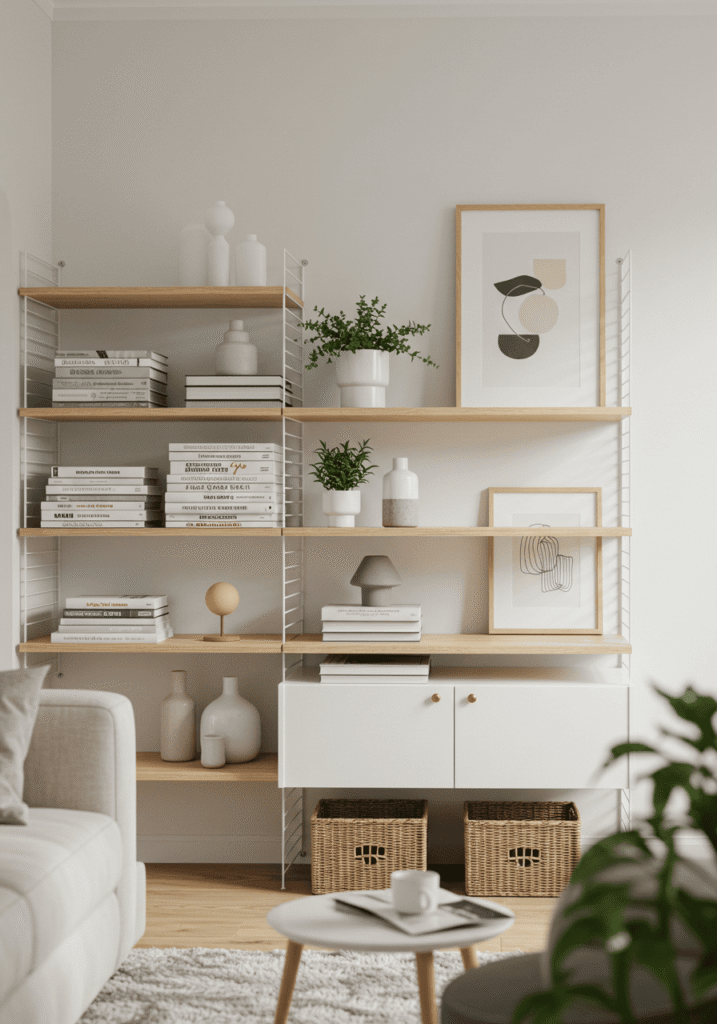
13. Less Is More: The Power of Negative Space
In the world of Scandinavian design, what you don’t include is often just as important as what you do. Embracing negative space—the empty areas around and between objects—is crucial for achieving that signature airy, uncluttered, and calming atmosphere.
- Why it works: Negative space allows each element in the room to breathe and be appreciated individually. It prevents visual clutter, makes a room feel larger, and promotes a sense of tranquility and order. It’s a core principle that makes even living room designs for small spaces feel open and inviting when applying Scandi style.
- Get the look:
- Resist over-decorating: Avoid filling every surface and corner. Let your walls, floors, and tabletops have some breathing room.
- Strategic furniture placement: Arrange furniture in a way that allows for easy flow and open pathways. Don’t push everything against the walls unless space is extremely limited.
- Minimalist shelving: Opt for open shelving and display only a few carefully curated items. The space between objects is part of the design.
- Wall art with space: When hanging art, especially in a gallery wall, ensure there’s ample space around each piece.
- Focus on essentials: Constantly ask yourself if an item is truly necessary or if it’s just adding to the visual noise.

14. The Charm of Imperfection: Wabi-Sabi Whispers
While Scandinavian design is known for its clean lines and order, there’s often a subtle embrace of imperfection, echoing the Japanese concept of wabi-sabi – finding beauty in the imperfect, impermanent, and incomplete. This adds a layer of authenticity and warmth.
- Why it works: Slight imperfections – a knot in a wooden table, the handmade quality of a ceramic vase, a slightly rumpled linen throw – make a space feel more real, lived-in, and approachable. It moves away from a sterile, showroom feel.
- Get the look:
- Handmade elements: Incorporate ceramics, textiles, or small decorative objects that are visibly handcrafted.
- Natural materials showing their age: Don’t shy away from wood that shows its grain, or leather that develops a patina over time.
- Lived-in textiles: Linen that creases naturally or a slightly worn vintage rug can add character.
- Avoid overly matched sets: Strive for a curated collection of items that work together harmoniously rather than perfectly matched furniture sets. This approach can be beautifully blended with elements from rustic living room ideas, focusing on natural imperfections and textures.
- Organic shapes: Choose accessories or even small furniture pieces with soft, organic shapes rather than rigidly geometric ones.
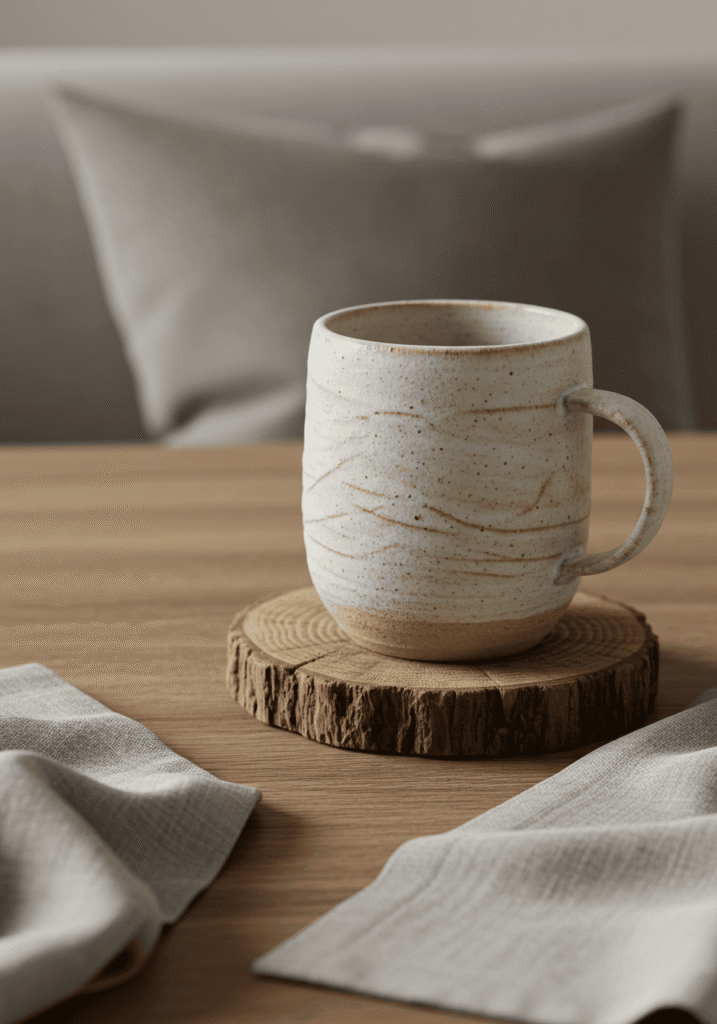
15. Modular & Adaptable Furniture: Smart Scandi Solutions
Reflecting the value placed on functionality and practicality, modular and adaptable furniture is a common feature in Scandinavian living rooms. These pieces are designed to evolve with your needs and make the most of available space.
- Why it works: Life changes, and your furniture should be able to adapt. Modular sofas can be reconfigured, shelving systems can be expanded, and nesting tables can be tucked away or brought out as needed. This is especially beneficial for smaller homes or for those who like to refresh their layout periodically.
- Get the look:
- Modular Sofas: Invest in a sofa made up of sections that can be rearranged to fit different spaces or needs.
- Expandable Shelving: Systems like String shelving are iconic for their adaptability and timeless Scandi appeal.
- Nesting Tables: These are perfect space-savers, offering extra surface area when required and tucking away neatly otherwise.
- Stackable Stools/Chairs: Useful for extra seating that can be easily stored.
- Desks that Convert: If your living room doubles as a workspace, consider a console table that can convert into a small desk.

16. Fireplace Focus: The Heartwarming Hearth
In a region known for its chilly climes, a fireplace or wood-burning stove is often a cherished focal point in a Scandinavian living room. It’s not just a source of heat, but a symbol of warmth, gathering, and hygge. Even if a real fireplace isn’t feasible, you can create a similar focal point.
- Why it works: A hearth naturally draws people together, creating a cozy and inviting atmosphere. The visual appeal of flames (or even a beautifully styled faux fireplace) adds a dynamic and comforting element to the room.
- Get the look (Real Fireplace):
- Simple Surrounds: Scandinavian fireplace design is typically minimalist. Think clean lines, simple tilework (white, grey, or a subtle pattern), or a sleek, modern wood-burning stove.
- Natural Materials: Stone, brick (often painted white or light grey), or concrete can be used for the surround.
- Functional Accessories: Stylishly store firewood in a minimalist log holder. Keep fireplace tools neat and functional.
- Get the look (Faux Fireplace/Focal Point):
- Electric Fireplaces: Modern electric fireplaces can offer a surprisingly realistic flame effect and are easy to install.
- Candle Cluster: Create a focal point on a mantel or a low shelf with a beautiful arrangement of pillar candles in varying heights, preferably in glass hurricanes or simple holders.
- Styled Mantel: If you have a non-working fireplace or just a mantel, style it with curated art, plants, and a few decorative objects.
- Wood Stove Aesthetic: Freestanding modern wood stoves are a design statement in themselves and fit perfectly with the Scandi vibe.

17. A Nod to Mid-Century Modern: Timeless Appeal
Scandinavian design shares a close kinship with Mid-Century Modern (MCM) aesthetics. Both styles emphasize clean lines, organic shapes, functionality, and natural materials, particularly wood. Incorporating subtle MCM elements can enhance the timeless appeal of your Scandi living room.
- Why it works: Mid-Century Modern pieces are iconic for their elegant simplicity and enduring style. They blend seamlessly with Scandinavian interiors, adding a touch of retro sophistication without feeling dated.
- Get the look:
- Furniture Silhouettes: Look for sofas, armchairs, or coffee tables with tapered legs, gentle curves, and an emphasis on wood (especially teak, walnut, or light oak if sticking closer to Scandi). You can explore more dedicated ideas for this style on our mid-century modern living room page.
- Iconic Lighting: Certain MCM lamp designs, like an arc floor lamp or a sputnik chandelier (used judiciously), can complement a Scandi space.
- Sideboards & Credenzas: A sleek, long, low sideboard is a hallmark of MCM design and provides excellent storage.
- Subtle Integration: You don’t need to go full Mad Men. A single statement MCM piece, like an Eames-style lounge chair or a distinctive coffee table, can be enough.
- Keep it Light: If choosing darker woods typical of some MCM pieces (like walnut), ensure the rest of the room remains light and airy to maintain the Scandi balance.

18. Thoughtful Throws & Textiles: Layers of Comfort
We’ve touched on texture, but the specific role of throws and textiles in a Scandinavian living room deserves its own spotlight. They are the unsung heroes of hygge, providing not just physical warmth but also visual softness and an invitation to relax.
- Why it works: Throws and cushions break up the clean lines of furniture, add pops of subtle color or pattern, and instantly make a space feel more inviting and comfortable. They allow for easy seasonal updates too.
- Get the look:
- Material Matters: Choose natural fibers like wool (chunky knits are classic), soft cotton, linen, or even a luxurious (faux) sheepskin.
- Drape Artfully: Don’t just fold throws neatly; drape them casually over the arm of a sofa, the back of a chair, or across the foot of a daybed.
- Cushion Collections: Mix and match cushion sizes, shapes, and textures. Combine a couple of plain neutrals with one or two featuring a subtle pattern or a different weave.
- Seasonal Swaps: Lighter linen and cotton for summer, cozy wools and knits for winter. This is an easy way to refresh your space.
- Color Coordination: Ensure your textiles coordinate with your overall color palette, either blending in or providing a gentle contrast. If you’re using a specific color like blue for a statement piece, such as a blue couch living room, use throws and cushions to tie it into the Scandi aesthetic with complementary neutrals and textures.

19. Black Accents: Adding Depth and Definition
While the Scandinavian palette is predominantly light and airy, the strategic use of black accents is a powerful tool for adding depth, definition, and a touch of modern sophistication. It acts as a visual anchor, grounding the lighter elements.
- Why it works: Black creates contrast, making whites appear brighter and drawing attention to specific design features. It adds a graphic quality that complements the clean lines of Scandi style without overwhelming the space.
- Get the look:
- Picture Frames: Simple black frames for artwork or photographs provide a crisp border and make images pop.
- Lighting Fixtures: A black metal floor lamp, pendant light, or wall sconce can be a striking focal point.
- Furniture Legs: The legs of sofas, chairs, or tables in black can add a sleek, modern touch.
- Small Decor Items: Think black ceramic vases, candle holders, or decorative trays.
- Hardware: Black cabinet pulls or door handles (if applicable in the living room context, like on a media unit) can be subtle yet effective.
- Moderation is Key: Use black sparingly. It’s an accent, not a dominant color. Too much can make the space feel heavy, moving away from the light Scandi ideal. This careful balance is also key when considering a full black and white living room scheme, which can be adapted to Scandi principles with a focus on texture and light.

20. Daybeds & Versatile Seating: Smart Style for Modern Living
In true Scandinavian fashion, where functionality often walks hand-in-hand with beautiful form, daybeds and other versatile seating options are a brilliant addition to the living room. They embody clever, space-saving design while offering an inviting spot to lounge.
- Why it works: Daybeds are wonderfully multi-functional – a sofa by day, a potential guest bed by night, or simply an extra-deep spot for curling up with a book. They maximize utility in smaller spaces and add a touch of laid-back, minimalist elegance.
- Get the look:
- Sleek Designs: Opt for daybeds with simple wooden frames (light oak, pine, or painted white) or minimalist metal construction.
- Comfort is Key: Dress your daybed with a comfortable mattress-like cushion and layer it with soft linens, textured throws, and an array of inviting cushions to make it feel like a cozy nest.
- Strategic Placement: Place it against a wall to function like a sofa, or by a window to create a dreamy reading nook.
- Beyond Daybeds: Consider benches with added cushions that can serve as seating or a coffee table, or large floor cushions for casual lounging.

21. The Beauty of Simplicity: “Less But Better”
Ultimately, the essence of a successful Scandinavian living room lies in embracing the philosophy of “less but better.” It’s about mindful curation, choosing quality over quantity, and creating a space that is both beautiful in its simplicity and deeply functional for your life.
- Why it works: A simplified, intentional approach to design reduces clutter (both physical and mental), promotes a sense of calm, and allows the inherent beauty of well-chosen materials and forms to shine. It’s a timeless approach that never goes out of style. If you’re aiming for an elegant yet understated feel, this principle also underpins many luxury living room designs, focusing on high-quality, impactful pieces.
- Get the look:
- Curate, Don’t Accumulate: Be intentional about every item you bring into your living room. Does it serve a purpose? Does it bring you joy?
- Invest in Timeless Pieces: Choose furniture and decor with classic lines and good craftsmanship that you’ll love for years to come.
- Focus on Functionality: Ensure your living room works for your lifestyle. Comfortable seating, adequate storage, and good lighting are paramount.
- Embrace the Calm: Let the simplicity of the design create a peaceful retreat from the chaos of the outside world. It’s not about emptiness, but about purposeful serenity.
- Personalize Thoughtfully: While minimalist, your space should still reflect you. A few cherished items, a beloved piece of art, or books that tell your story are what make it a home, not just a styled space. This also holds true even if you lean towards a more richly decorated style, like when styling a dark brown couch living room ideas setup; Scandi principles of curation can still apply to accessories and surrounding decor.

And there you have it – 21 inspiring ways to bring the beauty and tranquility of Scandinavian design into your living room! Remember, it’s all about creating a space that feels like a true reflection of you: calm, comfortable, and effortlessly chic. Happy decorating!


